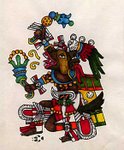-
Earlier this year, the English Journal of the National Council of Teachers of English asked my permission to reprint a poem I wrote 63 years ago in October of 1959 in my sophomore year of college. Asked to write a paragraph of introduction, the paragraph became nine pages of riffs on the poem. The editor wrote:
González was invited to revisit the classic poem he penned years ago that guided many high school students and teachers across the country in the last century. I first read his poem “To an Old Woman” when I was ten years old, in the spring of 1985. I remember sitting in our family’s kitchen and finding the poem in my eldest sister’s ninth- grade literature textbook. My sister, Alice, was cooking at the time, and she had put her book down to prepare our family dinner. It seemed apropos for me to read what my big sister was reading. Poems were featured in many pages and by diverse US authors; I was drawn to them. The book, titled Arrangement in Literature, was published in 1979, and was edited by teachers and professors who were also NCTE members.
González’s poem meant a lot to me, because it opens with a direct invitation by the speaker to enter the poem. I see the store, and I hear the elderly woman recognized and valued for her creativity, imagination, and energy. The poet who captured her life and language seemed like a caring interpreter and translator to me — then and now.
— R. Joseph Rodríguez
Editor, English Journal
of the National Council
of Teachers of English

Come, mother —
your rebozo trails a black web
and your hem catches on your heels,
you lean the burden of your years
on shaky cane, and palsied hand pushes
sweat-grimed pennies on the counter.
Can you still see, old woman,
the darting color-trailed needle of your trade?
The flowers you embroider
with three-for-a-dime threads
cannot fade as quickly as the leaves of time.
What things do you remember?
Your mouth seems to be forever tasting
the residue of nectar hearted years.
Where are the sons you bore?
Do they speak only English now
and say they’re Spanish?
One day I know you will not come
and ask for me to pick
the colors you can no longer see.
I know I’ll wait in vain
for your toothless benediction.
I’ll look into the dusty street
made cool by pigeons’ wings
until a dirty child will nudge me and say:
“Señor, how mach ees thees?”
~ Rafael Jesús González
Venga, madre —
su rebozo arrastra telaraña negra
y sus enaguas le enredan los tobillos;
apoya el peso de sus años
en trémulo bastón y sus manos temblorosas
empujan sobre el mostrador centavos sudados.
¿Aún todavía ve, viejecita,
la jara de su aguja arrastrando colores?
Las flores que borda
con hilazas de a tres-por-diez
no se marchitan tan pronto como las hojas del tiempo.
¿Qué cosas recuerda?
Su boca parece constantemente saborear
los restos de años rellenos de miel.
¿Dónde están los hijos que parió?
¿Hablan ahora solamente inglés
y dicen que son hispanos?
Sé que un día no vendrá
a pedirme que le que escoja
los matices que ya no puede ver.
Sé que esperaré en vano
su bendición desdentada.
Miraré hacia la calle polvorienta
refrescada por alas de paloma
hasta que un chiquillo mugroso me jale de la manga
y me pregunte:
— Señor, how much is this? —
~ Rafael Jesús González
A principios de este año, el English Journal del Concilio Nacional de Maestr@s de Inglés me pidió permiso para reimprimir un poema que escribí hace 63 años, en octubre de 1959, en mi segundo año de universidad. Cuando se me pidió que escribiera un párrafo de introducción, el párrafo se convirtió en nueve páginas de riffs sobre el poema. El editor escribió:
González fue invitado a revisar el poema clásico que escribió hace años y que guió a muchos estudiantes y maestros de secundaria en todo el país en el siglo pasado. Leí por primera vez su poema “Para una anciana” cuando tenía diez años, en la primavera de 1985. Recuerdo estar sentado en la cocina de nuestra familia y encontrar el poema en el libro de texto de literatura de noveno grado de mi hermana mayor. Mi hermana, Alice, estaba cocinando en ese momento y había dejado su libro para preparar nuestra cena familiar. Me pareció oportuno leer lo que leía mi hermana mayor. Los poemas aparecieron en muchas páginas y por diversos autores estadounidenses; Me sentí atraído por ellos. El libro, titulado Arrangement in Literature, se publicó en 1979 y fue editado por maestros y profesores que también eran miembros de NCTE.
El poema de González significó mucho para mí, porque abre con una invitación directa del hablante a entrar al poema. Veo la tienda y escucho a la anciana reconocida y valorada por su creatividad, imaginación y energía. El poeta que captó su vida y su lenguaje me pareció un intérprete y traductor cariñoso, entonces y ahora.
— R. Joseph Rodríguez
Director, English Journal
del Concilio Nacional
de Maestr@s de Inglés
-








.jpg)
.jpg)


.jpg)






